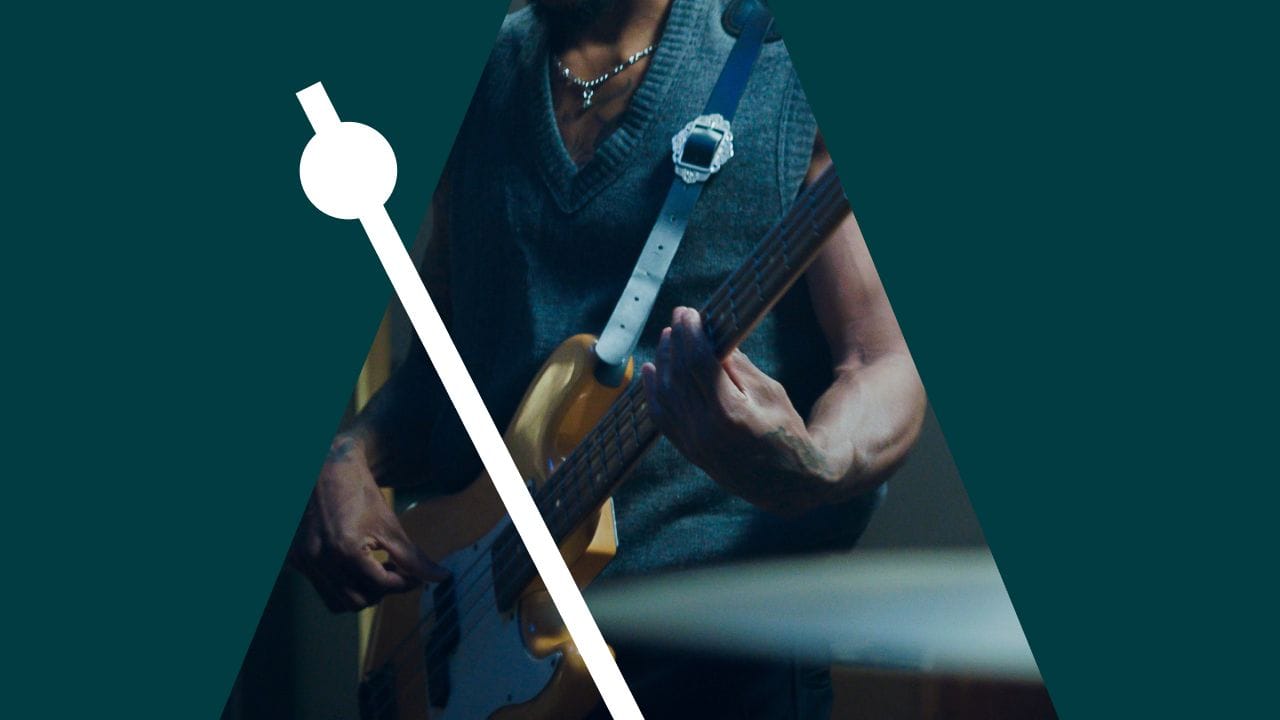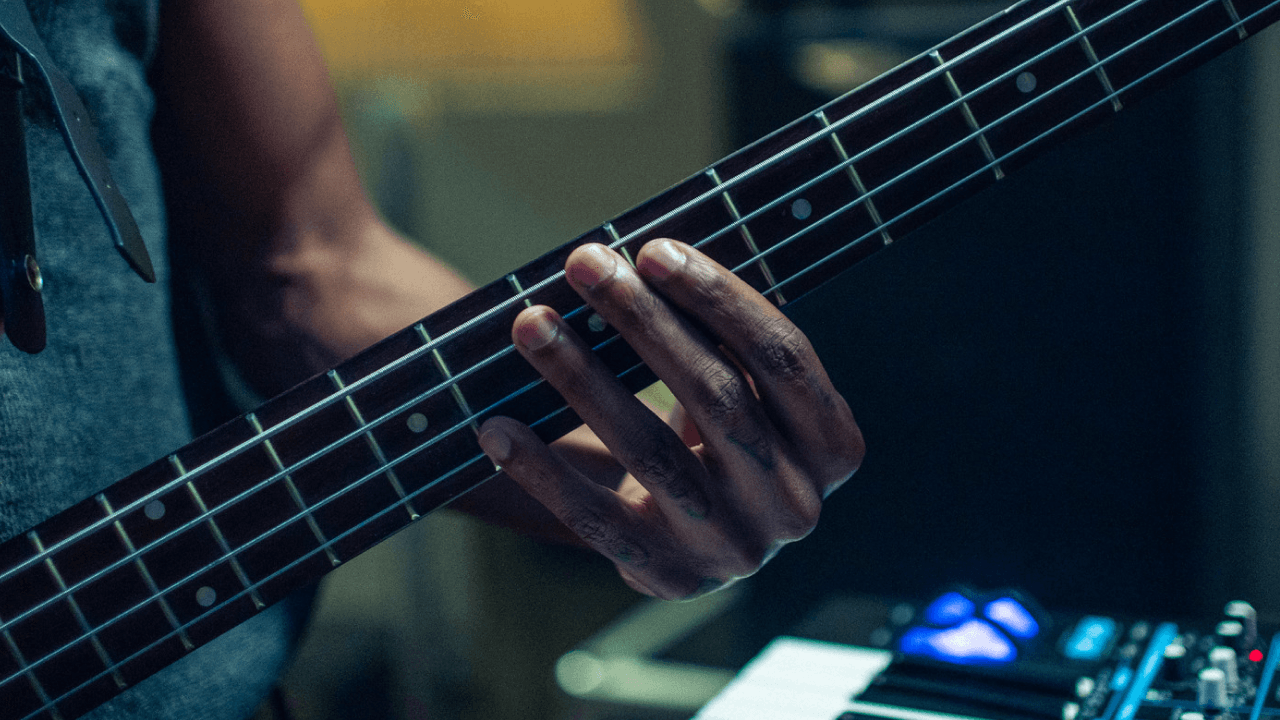When you think of rock-solid rhythm, you probably think drums. But every bassist knows the groove starts with you too.
Holding down the low end means driving the beat, shaping the feel, and anchoring the whole band. That’s why timing isn’t just important, it’s everything. And if you’re the bridge between rhythm and melody, there’s one tool that can completely transform your sense of time: the metronome.
Using a metronome for bass guitar might not sound glamorous, but it’s one of the smartest habits you can build. Whether you’re laying down a funk line, locking into a reggae groove, or tackling complex jazz syncopation, a metronome sharpens your timing and helps you serve the song with confidence.
So, let’s dive into what makes the metronome such a game-changer — and how to actually enjoy using it.
What is a metronome, anyway?
A metronome is a tool that helps musicians play in time by producing a steady, consistent pulse. Today, that could be an app, a feature in your DAW, an audio file, or a stand-alone digital or mechanical device.
The old-school pendulum-style metronome is now more of a collector’s item, mostly replaced by click tracks. But no matter the format, the purpose stays the same: giving you a clear rhythmic guide to practice with precision.
For centuries, musicians have used metronomes to build solid timing, smooth out their phrasing, and stretch their sense of rhythm. It’s a universal tool for every player, but when it comes to the metronome for bass guitar, it’s key for shaping a bassist’s groove and feel.
Why the metronome matters for bass guitar players
Bass isn’t just about playing the right notes — it’s about playing them at the right time. Groove is what makes a bassline feel alive, and behind every great groove is a bassist with solid internal timing. Practicing with a metronome sharpens that skill and takes your playing to the next level.
Timing that Stays Solid
A metronome keeps you honest. It exposes subtle moments when you're rushing or dragging, allowing you to correct your timing instantly. Over time, you’ll develop a rock-solid sense of pulse that doesn’t rely on external cues.
A tighter groove with the drums
Great rhythm sections don’t just play together: they lock in. Practicing with a metronome helps you lock into the drummer’s pocket so your lines feel tight, intentional, and in sync with the whole band.
Better takes in the studio
In most recording sessions, the bass goes down first. If your timing is shaky, every track on top of it will feel off. Metronome practice turns your playing into a rhythmic anchor that’s consistent, confident, and easy for others to build on.
More rhythmic freedom
The stronger your timing, the freer you get with it. Once you’ve got the pulse inside you, you can push or pull the beat to feel it. Playing behind, right on top, or just ahead becomes a choice, not an accident.
Best practices: Getting started with a metronome
Metronome practice isn’t about playing like a robot. It’s about building feel, awareness, and the kind of timing that feels effortless every time you pick up your bass.
Start at a comfortable tempo
Choose something slow, like 60–70 BPM. Play simple patterns: root notes, scales, or open-string exercises. Think of it like zooming in on your timing. Every note becomes a moment to notice, adjust, and improve.
Lock in with every beat
Start by playing one note per click. Land each one cleanly. Stay relaxed and steady with the pulse. You’re not just hitting notes, you’re training your ears and body to lock in with time.
Add subdivisions
Once you’re comfortable with whole beats, try eighth notes (two notes per click), then sixteenths (four notes per click). This builds control and steadiness. You’ll start to feel the space between beats more clearly, which is where groove lives.
Increase tempo gradually
When a tempo feels locked in, bump it up by 5 BPM. Take it slow. Accuracy always beats speed. Playing clean at lower tempos builds the control you’ll rely on when things get faster.
Metronome exercises for bass players
Practicing with a metronome doesn’t have to mean lifeless drills or endless scales. The right exercises can help you sound musical, not mechanical, while sharpening your timing in ways that actually translate to real songs and playing situations.
Here are a few solid, practical metronome exercises tailored for bass.
One-note groove
Pick a single note (like the E on your A string) and play it on every beat at a steady tempo. Focus on consistency in your attack, tone, and duration. It’s not about what you play, but how you play it. Small details like note length, muting, and dynamics make a big difference.
Walking bass time
Set your metronome to 70–90 BPM and play a simple 12-bar blues walking line with quarter notes. This builds a steady pulse and helps you feel the line’s momentum. Keep it swinging and make sure each note sits right in the pocket.
Groove variations (beats 2 & 4 only)
Adjust your metronome to click only on beats 2 and 4, like a virtual snare. It’s a fun challenge that helps you feel the backbeat and lock into the groove without depending on every beat.
Silence is golden
Take it further by setting your metronome to click once every two or four bars. This trains you to hold the pulse in the gaps and shows if your timing is really steady without leaning on the clicks.
3 common mistakes (and how to avoid them)
Practicing with a metronome is a game-changer, but it works best when you use it in ways that really build your skills. Watch out for these common pitfalls and how to dodge them.
Mistake 1: Gluing yourself to the click
It’s easy to treat the metronome like a boss you have to obey, but that kills the feel.
The goal is to play with the click, not because of it. So listen to it like you would a bandmate: stay in sync and stay musical.
Mistake 2: Always repeating the same exercise
Repetition builds skill, but only if it keeps you on your toes. If you stick to the same groove or scale, you limit your flexibility.
Mix up styles, practice rests and syncopation, or switch between straight and swing feels. Keep surprising yourself.
Mistake 3: Rushing to higher tempos
Speed can feel thrilling, but it often hides sloppy technique. Fast playing without control locks in mistakes.
Slow it down, nail it, and only bump up the tempo when everything feels easy and clean. Clean playing at a slow speed builds confidence when you speed up.
The Smarter Way to Practice with a Metronome
Metronomes come in all shapes and sizes, from old-school pendulums to sleek modern apps. But not every click track keeps up with how real musicians actually play.
If you’re practicing bass with live tracks, tempo shifts, or tricky grooves, you need more than just a static click. That’s where the Moises Smart Metronome stands out.
Here’s what makes it a game-changer:
- Automatic beat detection: Upload any song and instantly get the BPM and beat grid, no manual tapping.
- Perfect sync with your music: It stays locked to your song’s real structure, even when the tempo changes, so your timing stays tight.
- Smarter workflow: Loop a tricky part or slow it down while the metronome stays in sync. Combine it with stem separation, pitch shifting, and speed control, all in one place.
- Built-in AI Audio Separation: Mute drums, isolate vocals, and play along like you’re in the band. The metronome fills in right where you need it.
With Moises, you get everything together: stem separation, tempo control, metronome, chords, lyrics, loops, and more. No juggling apps. Just load up your track and lock in.
Make the click your best friend
The metronome is more than just a timekeeper. It’s your coach, your mirror, and your musical truth-teller. If you want to groove like Jamerson, thump like Flea, or hold it down like Pino Palladino, practicing with a metronome is not optional: it’s essential.
With the Moises App, it’s never been easier to stay locked in, grow your timing, and actually enjoy the process. Grab your bass, open the Smart Metronome, and let the click become your favorite bandmate.
Your future self and your bandmates will thank you for it.







